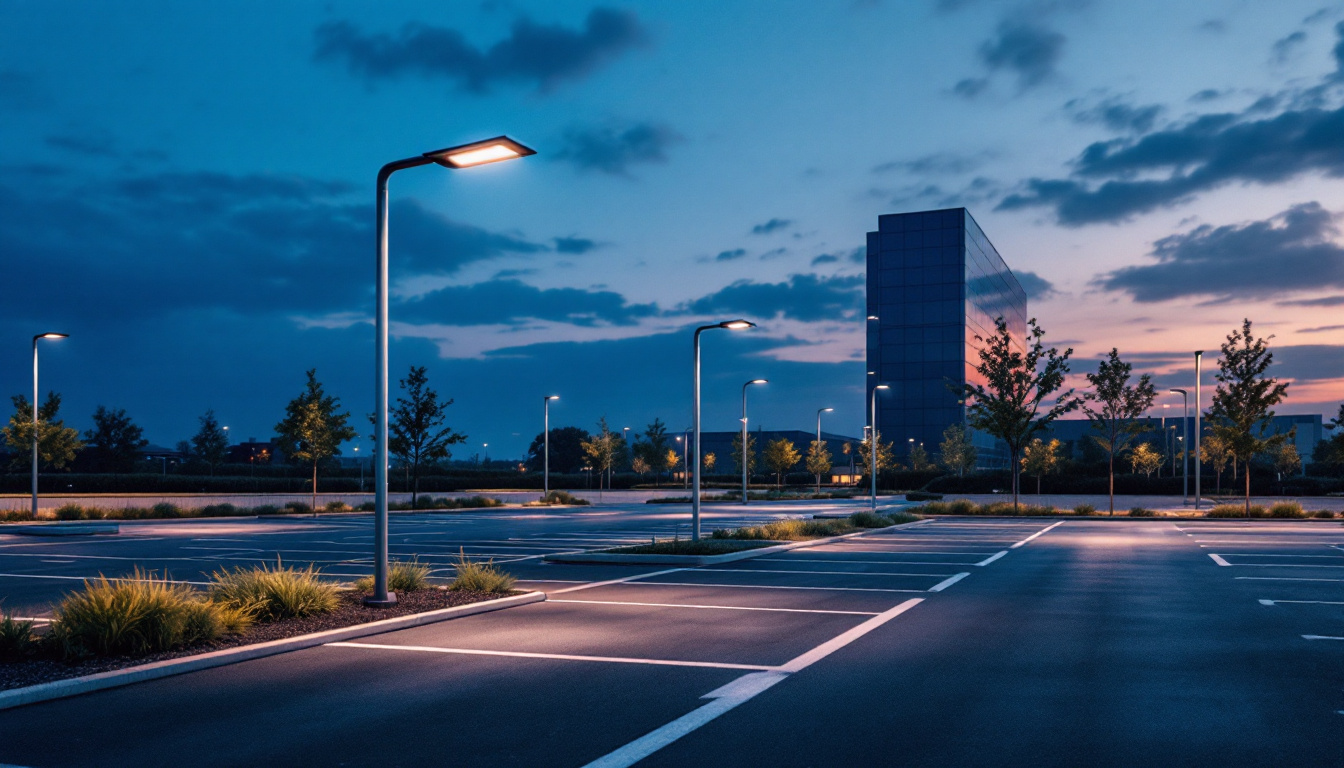

Lighting contractors play a crucial role in ensuring that spaces are illuminated effectively and aesthetically. Among the various lighting options available, Type T lights have gained popularity due to their versatility and efficiency. However, despite their advantages, there are common mistakes that contractors often make when working with Type T lighting. This guide aims to highlight these pitfalls and offer insights on how to avoid them, ensuring that projects are completed successfully and to the satisfaction of clients.
Type T lights, also known as tubular lights, are characterized by their long, cylindrical shape. They are typically used in commercial and industrial settings due to their ability to provide bright and uniform illumination. Understanding the unique features and applications of Type T lights is essential for contractors to maximize their effectiveness.
Type T lights are often utilized in a variety of settings, including warehouses, retail spaces, and office buildings. Their design allows for easy installation in both new constructions and retrofits. Contractors should be aware of the specific environments where Type T lights excel, as this knowledge can help tailor solutions that meet client needs.
In addition to general lighting, Type T lights can also be used for task lighting and accent lighting. Understanding the intended use of the lighting can guide the selection of the appropriate Type T fixture and placement within the space. For instance, in a warehouse, Type T lights can be strategically placed to illuminate aisles and workstations, ensuring safety and efficiency during operations. In retail environments, these lights can highlight merchandise displays, creating an inviting atmosphere that encourages customer engagement.
One of the main advantages of Type T lights is their energy efficiency. They often use less power compared to traditional lighting options, which can lead to significant cost savings for clients. Furthermore, Type T lights have a longer lifespan, reducing the frequency of replacements and maintenance.
Another benefit is their versatility. Type T lights can be found in various color temperatures, allowing contractors to create the desired ambiance in any space. This adaptability makes them a popular choice among contractors looking to meet diverse client preferences. Additionally, many Type T fixtures are compatible with smart lighting systems, enabling users to control brightness and color through mobile apps or voice commands. This integration not only enhances convenience but also allows for energy management, further optimizing operational costs.
Moreover, the design of Type T lights contributes to their aesthetic appeal. With sleek profiles and modern finishes, they can seamlessly blend into contemporary architectural styles. This makes them an excellent choice for spaces that prioritize both functionality and design. As more businesses focus on creating visually appealing environments, the role of Type T lighting becomes even more critical, ensuring that both form and function are achieved in lighting solutions.
“`html
While Type T lights offer numerous benefits, there are common mistakes that lighting contractors should be cautious of. Avoiding these pitfalls can lead to more successful projects and satisfied clients.
One of the most significant mistakes contractors make is failing to adequately plan and design the lighting layout. A well-thought-out design is essential for achieving the desired illumination levels and aesthetic appeal. Contractors should conduct thorough assessments of the space, considering factors such as ceiling height, wall color, and the purpose of the area.
Moreover, utilizing lighting design software can aid in visualizing the layout and ensuring that the Type T lights are positioned correctly. This step is crucial for avoiding issues such as dark spots or overly bright areas, which can detract from the overall effectiveness of the lighting. Additionally, contractors should consider the integration of natural light sources, as this can greatly influence the overall lighting scheme. By analyzing how sunlight interacts with the space at different times of the day, contractors can create a more dynamic and responsive lighting design that enhances both functionality and aesthetics.
Another common mistake is neglecting to perform proper electrical load calculations. Type T lights, while energy-efficient, still require careful consideration of the electrical system they will be connected to. Failing to account for the total load can lead to circuit overloads, tripped breakers, or even fire hazards.
Contractors should ensure that they are familiar with the electrical requirements of the Type T lights being installed. This includes understanding wattage, voltage, and the total number of fixtures that can be safely connected to a circuit. Consulting with an electrician may be necessary to ensure compliance with local codes and regulations. Furthermore, it’s beneficial for contractors to keep abreast of advancements in electrical technology, such as smart lighting systems that can optimize energy use and improve safety. By integrating these technologies, contractors can provide clients with modern solutions that not only meet their immediate needs but also adapt to future demands.
Color temperature plays a vital role in the effectiveness of Type T lighting. Selecting the wrong color temperature can significantly impact the ambiance of a space. For instance, cooler temperatures (above 4000K) are often suitable for workspaces, while warmer temperatures (below 3000K) create a more relaxed atmosphere.
Contractors should engage with clients to understand their preferences and the intended use of the space. Conducting mock-ups with different color temperatures can help in making an informed decision that aligns with the client’s vision. Additionally, it’s important to consider the psychological effects of color temperature on occupants. Research has shown that different temperatures can influence mood and productivity; therefore, contractors should be prepared to discuss these implications with clients. By offering insights into how lighting can enhance well-being and performance, contractors can position themselves as knowledgeable partners in the design process, ultimately leading to more satisfied clients and successful projects.
“`
Proper installation is key to maximizing the performance of Type T lights. Following best practices can help avoid common pitfalls and ensure that the lighting system functions optimally.
Ensuring that Type T lights are securely mounted is crucial for both safety and performance. Loose fixtures can lead to flickering lights or even damage to the fixture itself. Contractors should follow the manufacturer’s guidelines for mounting and use appropriate hardware to ensure stability.
Additionally, checking for any obstructions or potential hazards in the installation area is essential. This includes ensuring that the lights are not placed too close to flammable materials or in areas where they may be accidentally bumped or knocked down.
Wiring is a critical aspect of any lighting installation. Contractors must ensure that the wiring used for Type T lights is appropriate for the load and complies with local electrical codes. Using the correct gauge wire and ensuring proper connections can prevent electrical issues down the line.
Moreover, labeling wires clearly can aid in future maintenance and troubleshooting. This practice not only helps the contractor but also provides clarity for anyone who may work on the lighting system in the future.
After installation, thorough testing is essential to ensure that the Type T lights operate as intended. This includes checking for proper illumination levels, color temperature consistency, and ensuring that all fixtures are functioning correctly.
Conducting a walk-through with the client can also help identify any adjustments that may be needed. Engaging the client in this process fosters trust and ensures that their expectations are met.
Regular maintenance is vital for prolonging the lifespan and effectiveness of Type T lights. Implementing a maintenance plan can help avoid issues and keep lighting systems running smoothly.
Conducting routine inspections of Type T lighting installations can help identify potential problems before they escalate. Contractors should check for signs of wear, such as flickering lights or discoloration, which may indicate that a fixture needs to be replaced.
Additionally, inspecting the wiring and connections for any signs of damage or corrosion is crucial. Addressing these issues promptly can prevent more significant problems in the future.
Dust and debris can accumulate on Type T light fixtures, diminishing their effectiveness. Regular cleaning is essential to maintain optimal performance. Contractors should advise clients on the best cleaning practices, which typically involve using a soft cloth and mild cleaning solutions to avoid damaging the fixture.
In commercial settings, it may be beneficial to establish a cleaning schedule to ensure that fixtures are kept in good condition and continue to provide adequate illumination.
As technology advances, newer and more efficient lighting options become available. Contractors should stay informed about the latest developments in Type T lighting and consider recommending upgrades to clients when appropriate. This can enhance energy efficiency and improve the overall quality of the lighting system.
Encouraging clients to invest in smart lighting solutions can also provide added convenience and control over their lighting systems, further enhancing their experience.
Type T lights offer numerous advantages for lighting contractors, but they come with their own set of challenges. By understanding the common mistakes associated with Type T lighting and implementing best practices for installation and maintenance, contractors can ensure successful projects and satisfied clients.
Ultimately, the key to success lies in thorough planning, attention to detail, and a commitment to quality. By avoiding the pitfalls outlined in this guide, lighting contractors can enhance their reputation and deliver exceptional results in every project.
In a competitive industry, staying informed and adaptable is essential. Embracing continuous learning and improvement will not only benefit contractors but also contribute to the overall advancement of the lighting industry.
Ready to elevate your lighting projects with the highest quality Type T lights? Look no further than LumenWholesale, where we offer spec-grade lighting products at unbeatable wholesale prices. Say goodbye to local distributor markups and hello to superior lighting solutions that meet the highest industry standards. With LumenWholesale, bulk buying is a breeze, and with free shipping, you’ll enjoy premium lighting at the best value — all without hidden fees or compromises. Don’t let common lighting mistakes hinder your projects. Wholesale Lighting at the Best Value is just a click away. Enhance your reputation and deliver exceptional results with LumenWholesale.

Discover the essential insights every lighting contractor needs to know about LED lighting.

Discover how 120 volt plugs are revolutionizing the lighting industry, offering lighting contractors enhanced efficiency, safety, and versatility.

Discover how parking lot solar lights are revolutionizing the lighting industry with sustainable, cost-effective solutions.

Explore the essential insights that lighting contractors need to master the art of chandelier installation.
Get notified when NEW deals are released.
Optimize your budget with wholesale discounts.
Only top-quality, specification-grade lighting products.
No additional costs at checkout - what you see is what you pay.
We understand the unique needs of contractors.